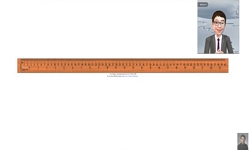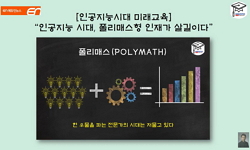This paper reports the observations of the temporal properties of syllable final plosives in /VCCV/ environment and the perceptual role of the temporal properties. The temporal properties of /VCCV/ are similar to tense type than lenis type in the poin...
http://chineseinput.net/에서 pinyin(병음)방식으로 중국어를 변환할 수 있습니다.
변환된 중국어를 복사하여 사용하시면 됩니다.
- 中文 을 입력하시려면 zhongwen을 입력하시고 space를누르시면됩니다.
- 北京 을 입력하시려면 beijing을 입력하시고 space를 누르시면 됩니다.

한국어 음절 말 폐쇄음에 대한 음향 및 청각 음성학적 연구 = An Acoustical and Auditory Study of Korean Syllable Final Stops
한글로보기https://www.riss.kr/link?id=A104071504
-
저자
양순임 (경성대학교)
- 발행기관
- 학술지명
- 권호사항
-
발행연도
2005
-
작성언어
-
-
주제어
음절 말 폐쇄음 ; 긴장성 ; 길이 ; 묵음 구간 ; 개방소음. ; syllable final plosives ; tenseness ; duration ; silent interval ; release noise. ; syllable final plosives ; tenseness ; duration ; silent interval ; release noise.
-
등재정보
KCI등재
-
자료형태
학술저널
- 발행기관 URL
-
수록면
77-100(24쪽)
-
KCI 피인용횟수
15
- 제공처
- 소장기관
-
0
상세조회 -
0
다운로드
부가정보
다국어 초록 (Multilingual Abstract)
The temporal properties of /VCCV/ are similar to tense type than lenis type in the point of following results. 1) The duration of vowels before syllable final stops significantly shorter than before the lenis stops. Instead, that was longer than before the tense stops or they were about the same. 2) The duration of consonants in VCCV was significantly longer than tense stops imbedded in vowel, regardless of the speaker.
The perception experiment showed that the duration of silent interval and release noise are perceptual cues to differentiate syllable final plosives. Listeners couldn't differentiate between the double consonants and laryngeal singletons.
This paper reports the observations of the temporal properties of syllable final plosives in /VCCV/ environment and the perceptual role of the temporal properties.
The temporal properties of /VCCV/ are similar to tense type than lenis type in the point of following results. 1) The duration of vowels before syllable final stops significantly shorter than before the lenis stops. Instead, that was longer than before the tense stops or they were about the same. 2) The duration of consonants in VCCV was significantly longer than tense stops imbedded in vowel, regardless of the speaker.
The perception experiment showed that the duration of silent interval and release noise are perceptual cues to differentiate syllable final plosives. Listeners couldn't differentiate between the double consonants and laryngeal singletons.
참고문헌 (Reference)
1 "후행하는 유 무성 자음에 의한 모음의 지속시간 고찰" 한국음성과학회 9 (9): 175-185, 2002
2 "한국어의 음성학적 연구" 형설출판사 1983
3 "프라트(Praat)를 이용한 음성 분석의 이론과 실제" 만수출판사 2003ㄴ
4 "청각 실험 도구 Alvin 사용법" 2003ㄱ
5 "조음 자리와 음향적 특성과의 관계에 대한 연구" 1992
6 "전기 인공 구개도에 의한 우리말의 음성학적 연구와 언어 장애자 치료" 한글 학회 170 : 3-47, 1980
7 "자음의 음향적 특성" 대한음성학회 1994
8 "음절 말 자음의 음성 자질" 한글 학회 258 : 55-81, 2002
9 "음절 말 자음 중화의 원인" 대한음성학회 41 : 31-47, 2001
10 "음절 끝 닿소리와 된소리되기" 2001
1 "후행하는 유 무성 자음에 의한 모음의 지속시간 고찰" 한국음성과학회 9 (9): 175-185, 2002
2 "한국어의 음성학적 연구" 형설출판사 1983
3 "프라트(Praat)를 이용한 음성 분석의 이론과 실제" 만수출판사 2003ㄴ
4 "청각 실험 도구 Alvin 사용법" 2003ㄱ
5 "조음 자리와 음향적 특성과의 관계에 대한 연구" 1992
6 "전기 인공 구개도에 의한 우리말의 음성학적 연구와 언어 장애자 치료" 한글 학회 170 : 3-47, 1980
7 "자음의 음향적 특성" 대한음성학회 1994
8 "음절 말 자음의 음성 자질" 한글 학회 258 : 55-81, 2002
9 "음절 말 자음 중화의 원인" 대한음성학회 41 : 31-47, 2001
10 "음절 끝 닿소리와 된소리되기" 2001
11 "음성 환경에 따른 한국어 폐쇄음의 음향적 특성 시간적 특성을 중심으로" 한국음성과학회 5 (5): 139-159, 1999
12 "우리말 소리의 연구" 과학사 1981
13 "소리의 길이" 국립 국어 연구원 1993
14 "된소리의 조음 시간과 인식과의 관계에 대한 실험음성학적 연구" 1992
15 "나랏말과 겨레의 슬기에 바탕을 둔 음운학 강의" 태학사 1998
16 "국어 음운학" 샘문화사 1988
17 "국어 음성학" 태학사 1996
18 "韓國語の 音節末 內破音の 喉頭調節" 朝鮮語學會 104 : 25-60, 1982
19 "The Vowel Length as a Function of the Articu? latory Force of the Following Consonants in Korean" 143-153, 2002
20 "Temporal Structure of Korean Plosives in /VCV/ Proceedings of SICONLP '90" -374, 1990
21 "Stops in the World's Languages" 65-49 101, 1992
22 "Some Observations on the Tense-lax Dis? tinction in Initial Stops in Korean Journal of Phonetics 1" 263-172, 1973
23 "Place Perception in Korean Consonants" 9 (9): 131-141, 2002
24 "Perceiving Final Voiceless Stops without Release Effects of Preceding Monophthongs versus Nonmonophtho? ngs" 44-56 55, 1999
25 "On the autonomy of the tensity feature in stop classification with special reference to Korean stops" 339-359, 1965
26 "Laryngeal Control in Korean Stop Production Journal of Phonetics 2" 145-152, 1974
27 "Is a Stop Consonant Released when Followed by Another Stop Consonant?" 71-39 82, 1982
28 "Electroglottography를 사용한 한국어 폐쇄 자음의 특성 및 임상적 적용" 한국음성과학회 4 (4): 157-173, 1998
29 "Cineradiographic Study of Korean Stops and a Note on Aspiration 이 상억 편저 Papers in Korean Phonetics" 19671987
30 "An EMG Study of Korean Intervocalic Laryngeal Consonants" 한국음성과학회 1997
31 "Aerodynamic Evidence for Articula? tory Overlap in Korean" 210-51 220, 1994
32 "Aerodynamic Charac? teristics of Korean stop consonants using Aerophone Ⅱ 전북대 어학연구소" 35-45, 1994
33 "Acoustic and perceptual evidence for complete neutralization of manner of articulation in Korean Journal of Phonetics 24" 295-312, 1996
34 "Acoustic Loci and Transitional cues for Consonants Readings in Acoustic Phonetics" Press 283-287, 19671973
35 "Acoustic Features of Korean /P" 112-22 128, 1970
36 "A theory of aspiration" 107-2 116, 1988
37 "A Phonetic Study of Korean Intervo? calic Laryngeal Consonants" 83-101, 1997
38 "A Phonetic Characterization of Release and Nonre? lease The Case of Korean and English" 347-367, 1998
39 "A Fiberscopic and Acoustic Study of the Korean Stops Journal of Phonetics 2" 161-180, 1974
40 "A Cross-Language Study of Vocing in Initial Stops" 384-422, 1964
동일학술지(권/호) 다른 논문
-
- 한글학회
- 이강로
- 2005
- KCI등재
-
- 한글학회
- 최규수
- 2005
- KCI등재
-
- 한글학회
- 송기형
- 2005
- KCI등재
-
- 한글학회
- 문순덕
- 2005
- KCI등재
분석정보
인용정보 인용지수 설명보기
학술지 이력
| 연월일 | 이력구분 | 이력상세 | 등재구분 |
|---|---|---|---|
| 2027 | 평가예정 | 재인증평가 신청대상 (재인증) | |
| 2021-01-01 | 평가 | 등재학술지 유지 (재인증) |  |
| 2018-01-01 | 평가 | 등재학술지 유지 (등재유지) |  |
| 2015-01-01 | 평가 | 등재학술지 유지 (등재유지) |  |
| 2011-01-01 | 평가 | 등재학술지 유지 (등재유지) |  |
| 2009-01-01 | 평가 | 등재학술지 유지 (등재유지) |  |
| 2007-01-01 | 평가 | 등재학술지 유지 (등재유지) |  |
| 2004-01-01 | 평가 | 등재학술지 선정 (등재후보2차) |  |
| 2003-01-01 | 평가 | 등재후보 1차 PASS (등재후보1차) |  |
| 2002-01-01 | 평가 | 등재후보 1차 FAIL (등재후보1차) |  |
| 1998-07-01 | 평가 | 등재후보학술지 선정 (신규평가) |  |
학술지 인용정보
| 기준연도 | WOS-KCI 통합IF(2년) | KCIF(2년) | KCIF(3년) |
|---|---|---|---|
| 2016 | 0.84 | 0.84 | 0.77 |
| KCIF(4년) | KCIF(5년) | 중심성지수(3년) | 즉시성지수 |
| 0.87 | 0.83 | 1.332 | 0.3 |




 KCI
KCI DBpia
DBpia







